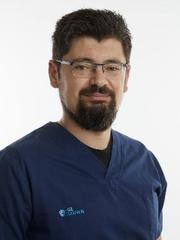Appointments
-
Are you a mynexuzhealth user? Book your appointment yourself via the mynexuzhealth website or the appointment module in the mynexuzhealth app.
-
Call +32 16 34 71 00
- Mondays to Thursdays from 08:00 to 18:00
- Fridays from 08:00 to 17:00
Types of parasomnia
Rhythmic movement disorders
- What? Head banging, body rocking
- When and in whom? Especially at sleep onset, mostly in young children.
- These movements go away spontaneously.
Night terrors
- What? Sudden awakening, sitting up, loud scream and signs of intense fear.
- When and in whom? Mainly in the first part of the night, almost exclusively in children
- Your child usually doesn’t respond when spoken to. The next day, your child will likely not remember anything.
Nightmares
- What? Dreams with frightening content
- When? Typically in the middle or end of the night, unlike night terrors.
Sleepwalking
- When? Mostly in the first part of the night.
- In whom? Up to age 12, sleepwalking is a normal and harmless phenomenon that disappears spontaneously. In adults, it may be caused by stress or sleep deprivation.
- The sleepwalker does not remember their night-time walk.
Talking in your sleep
- This is common and normally does not require any further investigation.
Teeth grinding
- What? Your jaws make grinding movements and your teeth rub forcefully against each other.
- In whom? Chronic condition affecting around 5% of the population.
- The cause of teeth grinding is often stress. Relaxation exercises may help. You can also wear special mouthguards. Consult your dentist for this.
Sleep start
- What? Sudden body movements while falling asleep, often with the feeling of falling into a hole.
- This is a harmless and common phenomenon, in both children and adults. This muscle jerk is a sign that we are relaxing and getting ready to sleep. Muscles have reflexes. When we suddenly relax during sleep onset, the body reacts with a reflex by tensing up again.
REM-related behavioural disorder
- What? Vivid dreams during REM sleep in which you are attacked, often triggering very aggressive movements. You may injure yourself and/or your bed partner.
- In whom? This is most commonly diagnosed in middle-aged or older men.
- This disorder is serious and rare. Specific medication can usually help manage it partially.



